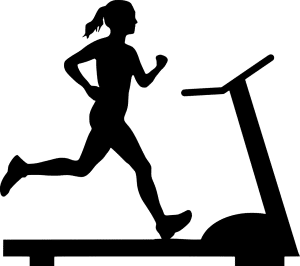Admit it: do you get a little bit annoyed when you see those workouts aimed at seniors? You know the ones: smiling older adults seated comfortably in chairs, sloooowly raising up one arm at a time, or stretching ever-so-gently from side to side? If those snails-pace workouts aren’t your cup of tea, and you prefer to get your heart pumping while you exercise with things like high-intensity interval training (HIIT), you’re in luck!
You might actually be doing more good for yourself than you thought, since a recent study shows that high-intensity exercise is not just good for your body, but also good for your brain. In fact, it looks like HIIT has some serious benefits for boosting memory, even if you’re already older. So if you want results now, both in terms of body and memory, you might want to give HIIT a try. Find out exactly why, and if it might be right for you.
What is HIIT?
In case you’re not up on the exercise lingo, here’s a refresher on what high-intensity interval training, or HIIT is. It’s pretty simple, really: HIIT involves switching between periods of high effort and recovery. These periods of work and rest are what set HIIT apart from other types of workouts, like circuit workouts (where you complete reps of a series of exercises) or steady-state cardio (like jogging). With those types of workouts, it’s more about completing the exercise, whereas with HIIT it’s also about the effort you’re putting in for a set amount of time.

When it comes to the actual movements involved in HIIT, they can vary based on what’s right for you and your abilities. It doesn’t have to be the stereotypical things like burpees and tuck jumps, especially for older adults who might not be so comfortable with jumping. You can even do HIIT on a stationary bike or treadmill, you would just need to do a burst of high speed for, say, 30 seconds, then recover with a slower pace for a minute or so.
To make sure you’re working at higher and lower intensities, you could try thinking about intensity as a 10-point scale, with zero being no effort, and 10 being all-out effort. If you’re a beginner, you can warm up at 1, then speed up to an effort of 3 for a few minutes, then slow down to a 2 for a few minutes. Eventually, though, as you get more fit, you’ll want to reach a high of 8, with recovery periods around a 4.
So why do HIIT? There are some definite benefits to this type of workout, if you’re able to do it. Studies suggest that doing HIIT can:
- Improve heart health in a shorter time than other forms of exercise, since it improves the maximum volume of oxygen your body use (VO2), which in turn improves how well your heart pumps blood
- Increase muscle strength
- Improve cholesterol
- Lower blood sugar and improve insulin resistance
- Boost metabolism
- Increase ability to do exercise that involves pushing your heart rate
- Lower blood pressure
- Help with weight loss
And now, a study done in the last few years has found that there’s another big benefit to HIIT workouts, that is especially beneficial for seniors: a big boost in cognitive function.
The Study

It turns out that there are actually a lot of lifestyle factors that go into cognitive health. According to Jennifer Heisz, an associate professor in the Department of Kinesiology at McMaster University and lead author of the study we’re going to look at, “There is urgent need for interventions that reduce dementia risk in healthy older adults. Only recently have we begun to appreciate the role that lifestyle plays, and the greatest modifying risk factor of all is physical activity.
And it also turns out that not all physical activity is created equal when it comes to boosting memory in older adults. The study, published in the journal Applied Physiology, Nutrition and Metabolism, suggests that intensity is critical. Seniors who exercised using short bursts of activity saw an improvement of up to 30% in memory performance while participants who worked out moderately saw no improvement, on average.
That’s huge! So what did the study look like? For the study, researchers recruited dozens of sedentary, but otherwise healthy older adults, between the ages of 60 and 88 who participated in three exercise sessions per week over a 12-week period. Some performed high-intensity interval training (HIIT) or moderate-intensity continuous training (MICT), while a separate control group engaged in stretching only.
Those doing HIIT did four sets of high-intensity exercise on a treadmill for four minutes, pushing their heart rate to up to 90-95% for those short bursts, then followed that with a recovery period. The participants doing MICT did one set of moderate-intensity aerobic exercise for nearly 50 minutes, only pushing their hearts to 70-75% of their max.
The participants then took tests that tap into the “newborn” neurons in the brain generated by physical activity; these neurons are great for forming new connections and memories – perfect for seniors who might struggle with that. According to Heisz, “The test looks at the ability to remember the details of new memories without mixing things up. For example, if you meet two new people today, it is important to not mix up their names or personal information, or to remember that you took your medicine yesterday rather than today.”
The fact that participants doing the more intense, HIIT-style workouts performed 30% better should make us all sit up and take notice. Maybe it’s time to get a little sweatier and more out of breath!
Some HIIT Options for Older Adults
First things first: if you’re interested in getting the benefits of a HIIT-style exercise regime, please talk to your doctor and get clearance before you start! It’s important to note that all the participants in the above study, while sedentary, were healthy, and were cleared by their doctors to do HIIT. So if you get the go ahead, where should you start?
Well, Heisz says, “I always recommend that people do what they love because that means they will be more likely to do it! It’s never too late to get the brain health benefits of being physically active, but if you are starting late and want to see results fast, our research suggests you may need to increase the intensity of your exercise.”
To do that, consider these starting steps to get yourself into higher-intensity workouts:
- Always warm up before your workout
- To make your workout more efficient, plan it out ahead of time – you can follow along with a written workout, audio workout, or a video (check out YouTube for some great ideas)
- Make sure you keep good form
- Drink water to stay hydrated throughout your workout
- Start with a familiar exercise for you, like walking, cycling, or bodyweight exercises
- Use a timer to keep track of your high intensity and recovery intervals
- Start slow and increase your effort gradually
- Don’t overdo it: start with just 1-2 HIIT sessions per week, and don’t do it more than 3 times a week

And remember, HIIT doesn’t have to mean crazy, unfamiliar exercises that require you to jump up onto things. You can get a great HIIT workout by alternating between short periods of higher intensity and longer periods of recovery while:
- Walking
- Cycling (stationary or outdoors)
- Swimming
- Using an elliptical machine
- Boxing (throw as many punches as you can during your work interval, then walk/jog it out during your recovery)
- Low-impact bodyweight HIIT cardio, or low-impact HIIT with light weights (head to YouTube for some ideas, or some videos to follow along to)
Concerns about memory are very real, and can be very distressing as we age. But, while we can’t change our genetics, we are learning that there are things we can do to keep our brains healthy, while simultaneously benefiting our bodies. It sounds like HIIT might just be one of the best of the best when it comes to boosting your memory and keeping you lean and mean, so if it’s something you feel like you can do, and want to do, talk to your doctor about it ASAP. It could help you stay sharper for longer than you even hoped!
Co-written by Joanna Bowling